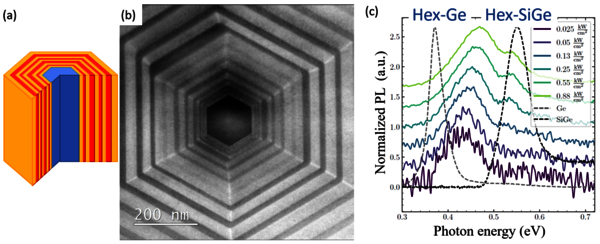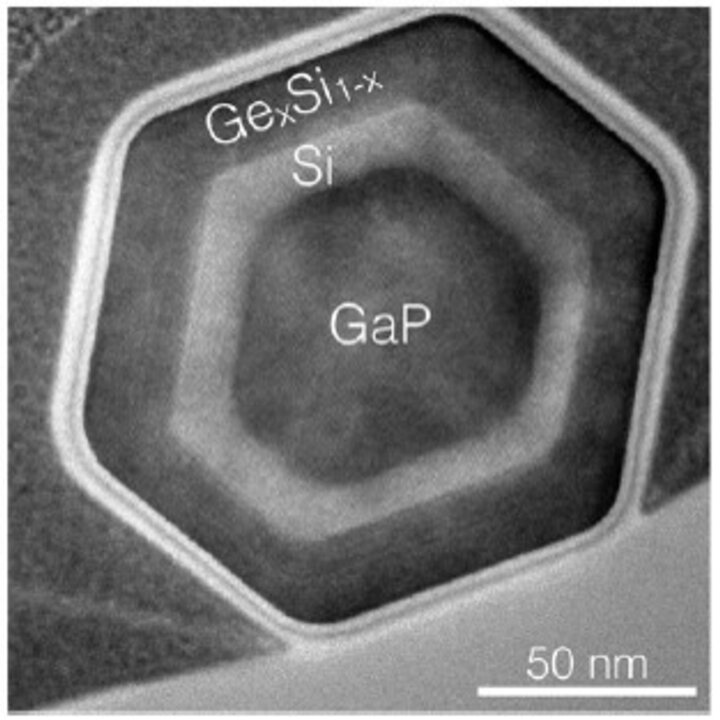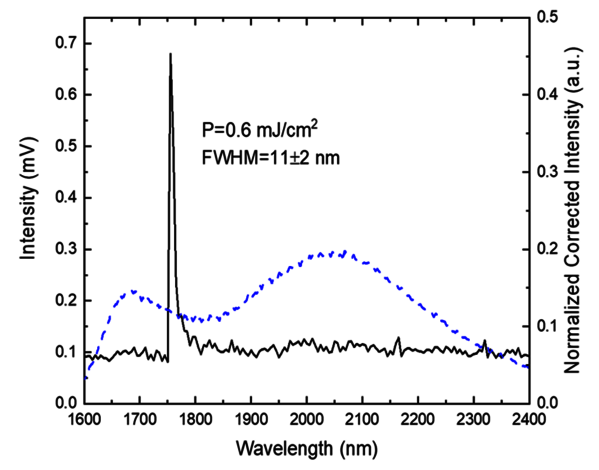Our research aims to revolutionize the electronics industry by adding intra-chip and chip-to-chip communication at the speed of light, offering significantly reduced energy consumption. Cubic crystal phase SiGe is known to be great for electronics. We propose to develop hexagonal crystal phase SiGe (Hex-SiGe), which features a direct bandgap and will add photonic capabilities to electronics. Direct bandgap silicon has been the holy grail of the semiconductor industry for many years, since it would allow integrating both electronic and optical functionalities on a silicon platform. Recent theoretical calculations predict that hexagonal crystal phase SixGe1-x features a tunable direct bandgap from 1380-1800 nm, exactly coinciding with the low loss window for optical fibre communications. We have recently developed a generic approach to grow defect-free hexagonal SixGe1-x with tunable composition. We propose to demonstrate efficient light emission from direct bandgap SiGe, followed by the development of a SiGe nanolaser. Work towards Si-integration is included. The demonstration of a Hex-SiGe nanolaser will serve as a game-changer for transforming the electronics industry.
Light from Silicon
Silicon is the dominant semiconductor in the electronics industry, but it is not able to emit light due to its indirect bandgap. We synthesize hexagonal Silicon-Germanium (hex-SiGe) nanowires which are capable to efficiently emit light. The hexagonal SiGe structures are grown by Metal-Organic Chemical Vapor Deposition (MOCVD). For reference, see figure 1.
Towards a hex-SiGe laser
Our research is focused towards the demonstration of a hex-SiGe nanolaser. We presently have clear proof that hex-SiGe shows strong stimulated emission. For reference, see figure 2.
Hex-Ge/SiGe multiple quantum wells
We are investigating hex-Ge/SiGe quantum wells for quantum well lasers and as a first step towards hex-Ge/SiGe quantum dot single photon emitters. For reference, see figure 3.

Towards hex-Ge/SiGe quantum dots
Hex-SiGe nanowires are grown in the c-direction, inhibiting the growth of axial quantum dots. For this purpose, we grow nanowire branches in the〈1–100〉 direction, in which we have full compositional control, allowing us to grow quantum dots. For reference, see figure 4.



